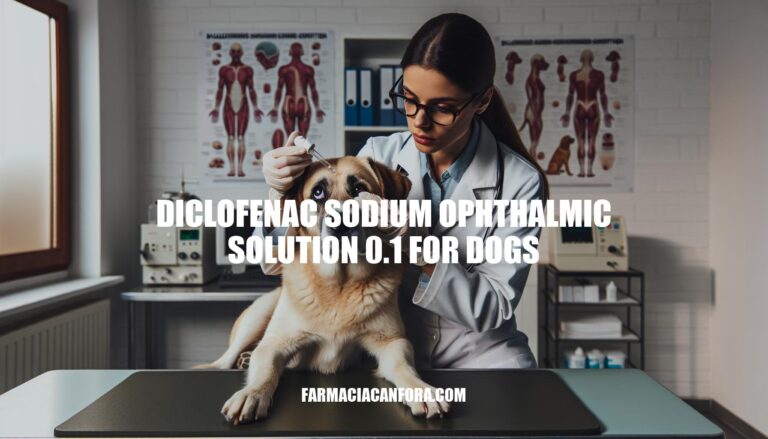


Diclofenac sodium ophthalmic solution 0.1% is a nonsteroidal anti-inflammatory drug (NSAID) used in veterinary medicine to reduce inflammation and pain in dogs’ eyes. It is commonly prescribed after eye surgeries, such as cataract removal, to alleviate post-operative swelling and discomfort. This medication helps ensure a smoother recovery by minimizing inflammation and easing sensitivity to light.
Diclofenac sodium ophthalmic solution 0.1% for dogs works by inhibiting the production of prostaglandins, which are compounds that trigger inflammation. By blocking these compounds, diclofenac reduces swelling, pain, and inflammation in the eye, making it effective for treating conditions like post-surgery inflammation and chronic uveitis.
Diclofenac sodium ophthalmic solution 0.1% for dogs is prescribed in the following specific conditions and scenarios:
Post-Surgery Recovery:
Treatment of Uveitis:
Other Eye Inflammations:
Here are the guidelines for administering diclofenac sodium ophthalmic solution 0.1% for dogs:
Make sure to follow your veterinarian’s specific instructions and consult them if you have any questions or concerns.
Potential Side Effects:
Precautions:
Always consult your veterinarian before starting or stopping any medication for your pet.
is a crucial medication in veterinary care for managing eye inflammation and pain in dogs.
It effectively reduces swelling, pain, and sensitivity to light by inhibiting prostaglandin production.
This nonsteroidal anti-inflammatory drug (NSAID) is commonly prescribed after eye surgeries, such as cataract removal, to ensure a smoother recovery.
Its benefits include alleviating post-operative discomfort, minimizing inflammation, and easing photophobia.
Diclofenac sodium ophthalmic solution 0.1% is also used to treat active and chronic uveitis, as well as other eye inflammations.
Proper administration techniques are essential to avoid contamination of the eye drops, and owners should consult their veterinarian for specific guidance on dosage and frequency.
With its ability to manage eye inflammation effectively, diclofenac sodium ophthalmic solution 0.1% plays a vital role in veterinary care, particularly in post-surgery recovery and uveitis treatment.